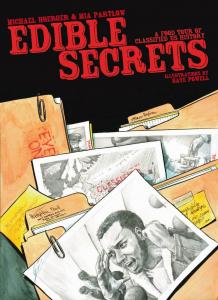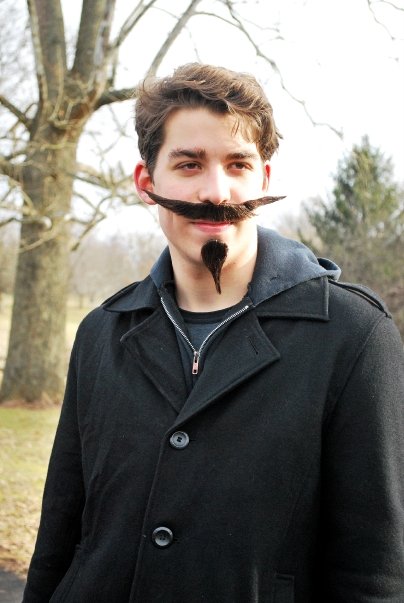The Microcosm Interview with How & Why’s Matte Resist!
We recently had an email chat with How & Why author Matte Resist about his new book, the definition of “work,” and building a DIY time machine!
Q: How did the book come about? What was the genesis of the thing?
A: The motivation of the book was Joe asking me if I’d like to do the follow up for Making Stuff and Doing Things, but really I’d been thinking about doing a DIY book for a long time. I’d written a lot of DIY plans for my zine (Resist), some of which were used in Making Stuff and Doing Things and I had started compiling other plans and ideas for a future book. Most of them centered around bicycle repair and modification. After How to Rock & Roll and Chainbreaker came out, I felt that the bicycle repair ground had been pretty well covered so a lot of the articles that I had actually written and illustrated were scrapped and I started writing about other projects I was doing. Some of the projects were things I wanted to do but hadn’t found time or motivation to do until I was writing a book.
Q: Have you had much feedback from people who’ve completed the projects?
A: I’ve gotten some feedback from the bike trailer plans which were included in Resist #46. All of it has been positive except for one person who said it was too heavy. Very little of the rest has seen print before now, at least not in its current form, so there’s been little time for feedback. I will say that since I’ve started writing about gardening that is by far the topic I receive the most questions about. I always try to share what I know but usually wish that I knew more and could offer more information. I read a quote once that sums it up pretty well, something to the effect of “I’m a very old man, but a very young gardener.” Taming nature is no easy task and even after a lifetime of trying there’s still a lot to learn! Mostly I’ve heard that the plans are easy to follow and that the illustrations usually answer any questions that come up, which is exactly what I was shooting for!

Q: If a really young kid—say 10 or 12—asked you to define the concept of DIY—your own personal version of it—in one sentence what would you say?
A: It’s about learning to do things for yourself instead of always buying everything you need from the store.
Q: If you built a time machine and went back to meet your great-great-great grandfather and he asked you to define “happiness” in one sentence what would you say?
A: I’d say, “Grandpa, you know as well as I that happiness is about loving and being loved.”
Q: If your first boss of your first-ever job asked you to define the word “work” in one sentence what would you say?
A: Then or now? (and what’s with all this once sentence crap? I’m a storyteller not a poet!) At 15 years old I probably would have said, “It’s a necessary evil.” Now? Maybe I’d say, “It’s the act of being productive, and doesn’t necessarily have anything to do with a job.”
Q: If an interstellar spaceship landed in your backyard and an alien climbed out and asked you to define your planet in one sentence what would you say?
A: It’s on the brink of a major upheaval which will either lead to total collapse or a resurgence of simple living.
Word Association Time!
1 Bike – ride
2 Tree – house
3 Punk – ethics
4 America – for sale
5 Publish- self

Q: Finally, do you have any new projects coming up?
A: Yes, I have two major upcoming projects but they’re both top secret! Other than those, I’m hoping to finish up some work on our basement. I’ve been meaning to install a bathroom for a few years and I think I’m actually going to do that this year. We’ve also been thinking about having a small home recording studio which would double as a spare bedroom. I’m working on an improved sidecar design and a couple trailer designs for very specialized purposes. I have MANY more things I want to try with musical instrument building. (Percussion and amp building are on my mind right now.) Also, I’m building a time machine so I can go back to meet my great-great-great grandfather and ask him to define “happiness” in one sentence. I just hope I don’t mess up the space-time continuum in the process.
Order out How & Why right here.

 Total Expenses $385,865.21
Total Expenses $385,865.21







